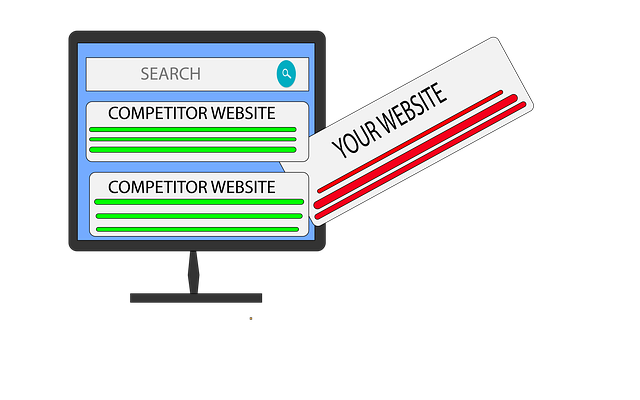A well-designed ecommerce website is crucial for retail success in today's digital era. It combines aesthetics, functionality, and conversion optimization tailored to unique business needs, including intuitive navigation, fast loading speeds, mobile responsiveness, high-quality visuals, user-friendly search, secure checkouts, integrated payment gateways, reviews, social media sharing, and personalized recommendations. By focusing on these elements, businesses create a powerful online presence that attracts, converts, and retains customers in a competitive market. Effective ecommerce website design boosts UX through streamlined purchasing journeys, clear CTAs, mobile optimization, and captivating visuals, driving satisfaction, repeat visits, and brand loyalty.
E-commerce website design is a powerful tool for businesses aiming to thrive in the digital marketplace. With millions of users expecting seamless, intuitive shopping experiences, understanding the essentials of effective design is crucial. From user experience and visual aesthetics to navigation, speed optimization, and mobile commerce integration, this article explores the key components that contribute to successful online retail. Discover how these elements work together to create captivating, high-converting e-commerce websites.
Understanding E-commerce Website Design Essentials

In the realm of e-commerce, a well-designed website is more than just an online storefront; it’s a powerful tool to enhance user experience and drive sales. E-commerce website design involves a strategic blend of aesthetics, functionality, and conversion optimization techniques tailored to the unique needs of digital retail businesses. A successful design must consider factors like intuitive navigation, optimized loading speeds, responsive layouts for seamless mobile shopping, and visually appealing product displays that engage customers.
Essential elements of e-commerce website design include user-friendly search functions, clear product categorization, high-quality product images with detailed descriptions, secure checkout processes, and integration of various payment gateways. Additionally, incorporating features like customer reviews, social media sharing buttons, and personalized product recommendations can significantly boost engagement and conversions. By focusing on these design essentials, businesses can create a robust online presence that attracts, converts, and retains customers in the competitive e-commerce landscape.
User Experience: The Cornerstone of Effective Design

In the realm of ecommerce, where user experience (UX) is paramount, website design plays a pivotal role in converting browsers into buyers. An effective ecommerce website design should be intuitive and seamless, guiding users through the purchasing journey with ease. It involves carefully structuring content, optimizing navigation, and implementing efficient checkout processes to ensure a frictionless shopping experience. A well-designed UX not only enhances customer satisfaction but also encourages repeat visits and fosters brand loyalty.
The cornerstone of successful ecommerce website design lies in understanding user behavior and creating a layout that aligns with their expectations. This includes utilizing clear call-to-action (CTA) buttons, optimizing for mobile responsiveness, and incorporating high-quality visuals to engage users. By prioritizing UX, ecommerce sites can effectively showcase products, simplify complex tasks, and ultimately drive higher conversion rates, solidifying their online presence in a competitive market.
Visual Aesthetics: Captivating and Modern Layouts

In the competitive landscape of e-commerce, first impressions are crucial. Visual aesthetics play a pivotal role in drawing and retaining customers’ attention. Modern layouts, characterized by clean lines, ample white space, and captivating visuals, create an engaging user experience that encourages browsing and ultimately drives conversions. A well-designed ecommerce website should balance esthetics with functionality, ensuring product pages load swiftly, navigation is intuitive, and the overall design adapts seamlessly to various devices.
The goal is to craft a visual tapestry that reflects the brand’s identity while showcasing products in the best light. Incorporating high-quality images, animated elements, and interactive features not only enhances aesthetics but also provides valuable context for shoppers. A balanced combination of typography, color schemes, and layout structures can transform an ecommerce website into a vibrant and inviting digital storefront, fostering customer engagement and loyalty.
Navigation Systems: Seamless Browsing for Customers

In the realm of ecommerce website design, an efficient navigation system is paramount to enhancing user experience and driving conversions. Customers expect seamless browsing, allowing them to effortlessly explore products, compare options, and make purchases without frustration or confusion. A well-structured navigation menu, featuring intuitive categories and subcategories, is essential for guiding users through the site’s vast offerings. Incorporating filters and sorting options further simplifies the search process, enabling customers to find exactly what they’re looking for promptly.
Ecommerce websites should also consider implementing a persistent navigation bar across pages, ensuring that users never lose their way. Breadcrumb trails provide an additional layer of guidance, especially within complex product hierarchies. By making navigation intuitive and accessible, businesses can foster a smooth user journey, encouraging exploration and ultimately leading to higher sales and increased customer satisfaction in the dynamic world of ecommerce website design.
Responsive Design: Adapting to All Screens

In the dynamic landscape of e-commerce, a well-designed website is no longer just an option—it’s a necessity. At the heart of this design lies responsive architecture, ensuring your site seamlessly adapts to various devices and screen sizes. This approach is pivotal for engaging modern shoppers who access online stores from smartphones, tablets, and desktops. By implementing responsive design, e-commerce websites can offer a consistent, user-friendly experience across every platform.
The beauty of responsive design lies in its ability to optimize content, images, and layouts automatically. From product pages to shopping carts, the website adjusts fluidly, providing an intuitive interface regardless of the screen’s dimensions. This adaptability not only boosts usability but also improves search engine optimization (SEO), as Google favors mobile-friendly sites. In essence, responsive design is a cornerstone of successful ecommerce website design, fostering accessibility and driving conversions in today’s digital marketplace.
Optimizing for Speed: Enhancing Performance

In the realm of ecommerce website design, speed is paramount. Customers today expect instant gratification, and a slow-loading site can lead to high bounce rates and lost sales. Optimizing for speed involves various techniques such as minifying CSS and JavaScript files, leveraging browser caching, compressing images, and utilizing content delivery networks (CDNs). These strategies not only improve load times but also enhance overall website performance, ensuring a seamless user experience that keeps shoppers engaged and encourages repeat visits.
A well-optimized ecommerce site doesn’t just feel faster; it performs better too. Faster loading times can significantly boost search engine rankings through Google’s PageSpeed Insights algorithm, driving organic traffic to your store. Moreover, improved performance reduces server load, leading to better conversion rates as visitors are less likely to abandon their carts due to slow checkout processes or timing out waiting for pages to load. In essence, investing in speed is an integral part of successful ecommerce website design.
Incorporating Key Features: Shopping Cart & Checkout Process

An effective ecommerce website design goes beyond aesthetics; it prioritizes a seamless and user-friendly shopping experience. Incorporating key features like a prominent shopping cart and a streamlined checkout process is paramount. The shopping cart serves as a central hub, allowing shoppers to browse products, add items, and review their selections before proceeding to checkout. This feature enhances navigation and instills confidence in users by providing a clear overview of their chosen items.
The checkout process, a critical component of ecommerce website design, must be simple and efficient. It should guide users through necessary steps, including order summary, shipping details, and payment options. A secure and diverse range of payment gateways integrated into the design ensures convenience and builds trust among customers. By simplifying these key features, ecommerce websites foster customer satisfaction, encourage repeat visits, and ultimately drive conversions.
Mobile Commerce: The Rise of Mobile Shopping

In today’s digital age, mobile commerce, or the rise of mobile shopping, has become a game-changer in the e-commerce landscape. With the ubiquitous nature of smartphones and tablets, consumers now expect seamless and convenient online purchasing experiences on their devices. This shift towards mobile shopping has prompted e-commerce website designers to prioritize mobile optimization. A well-designed ecommerce website must be responsive, ensuring fast loading times, intuitive navigation, and an easy checkout process across all platforms, from desktops to mobile phones.
Mobile commerce offers unique opportunities for businesses, allowing them to reach a broader audience and provide personalized shopping experiences. Effective ecommerce website design incorporates features like optimized product pages, easy-to-read content, and mobile-specific call-to-action buttons to enhance user engagement. By embracing these trends, online retailers can stay competitive, cater to their customers’ needs, and ultimately drive sales in this rapidly evolving market.
